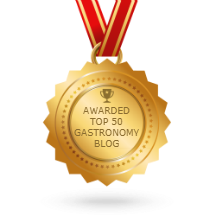By Gerry Dawes
Madrid, Spain
January’s eagerly awaited, annual, star-studded culinary conference, Madrid Fusión 2007, may turn out to be a watershed moment in the history of modern Spanish cuisine. The theme of this year’s star-studded conference was La Materia Prima Base de la Creatividad (Product: The Base of Creativity) and it perhaps inadvertently brought into high relief the sea change that I have been seeing and hearing all over the country during more than 20 trips in the past three years, a tidal swing that has grown exponentially over the past year especially. The fifth annual edition of Madrid Fusión, a conference whose focus has been overwhelmingly about innovation and technique, turned out to be something of a tug-a-war dynamic between the two modern Spanish culinary movements, both of which utilize some elements of the other, but whose result is often clearly different.
Cocina de vanguardia, a style whose most famous proponent is super-star chef Ferran Adrià and whose global face has been characterized by such innovations as flavored foams, mango and olive oil caviar, titantium-laced wafers, eggs with a gold leaf veil, perfume-flavored ice creams, etc. is currently being challenged by a more restrained modern Spanish cuisine style that features Spanish product-driven, regional tradition-derived dishes that are not as perplexing to the restaurant goers and are not just user-friendly, they often more delicious and comprehensible as well. In places such as Valencia and Alicante, where some remarkable cooking is going on, this emerging direction, which has been coming of age over the past several years, is beginning to draw serious national and international attention. Call it cocina moderna neo-tradicional for lack of a formal term.
Ferran Adrià, the ultra-famous Catalan culinary star, did his annual “Ferran show” that featured a nine-point manifesto entitled Culinary Relections on the Product (Before Cooking) and including such points as the source, in-depth knowledge, proximity, ecological impact, price, etc. of the ingredients used in cooking. American chef Dan Barber (Blue Hill at Stone Barns in New York), who eschews scientific pyrotechnics in his kitchen, presented an elaborate, thoughtful talk describing the great lengths he goes to in developing better agricultural techniques on Blue Hill’s own farm in order to insure the highest quality organically grown, sustainable products for his kitchen. Star Spanish chefs Juan Mari Arzak, Dani Garcia (Calima, Marbella), Quique Dacosta (El Poblet, Denia-Alicante) and London chef Heston Blumenthal all kept the vanguardista flag flying, while Charlie Trotter (Charlie Trotter’s, Chicago), Tetsuya Wakuda (Tetsuya’s, Sydney) and Grant Achatz (Alinea, Chicago) put their unique twists on the theme. But, the headline grabber was three-star chef Santi Santamaria (Raco de Can Fabes in Sant Celoni, outside Barcelona), who appeared for the first time at Madrid Fusión (he disdains culinary conferences) and dropped a culinary mega-bomb, basically denouncing vanguardista cuisine and drawing a five-minute standing ovation.
Somewhere between Santamaria’s somewhat extreme diatribe and the 3-D glasses and candy aromas that were part of Heston Blumenthal’s presentation lies a common ground where Spanish (and global) modern cuisine is heading. Technology, science and equipment will still figure in the evolution of food in Spain, they will just not define and characterize Spanish modern cuisine as they have during the past decade especially, when many dishes often seemed to be the product of high-tech culinary laboratory experiments, rather than focused on getting the best possible food on the plate, something Spanish chefs are particularly gifted at doing.
Q&A ABOUT THE FLAVORS OF AL-ANDALUS
-
Page spread from All About History magazine.FLAVORS OF AL-ANDALUS, The
Culinary Legacy of Spain is a book with 120 recipes whose roots are in
Moorish Spain...












No comments:
Post a Comment